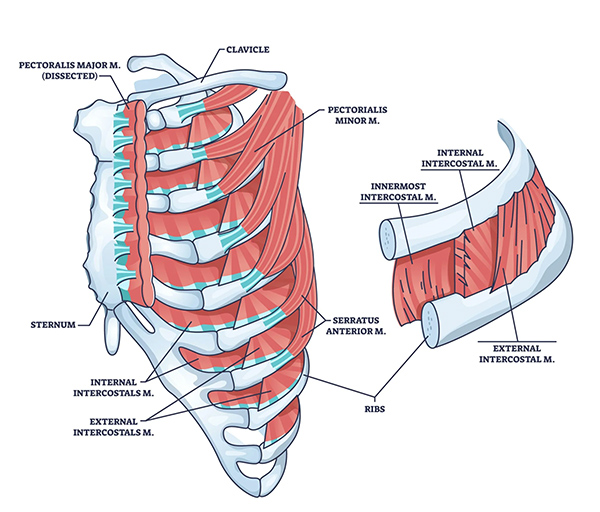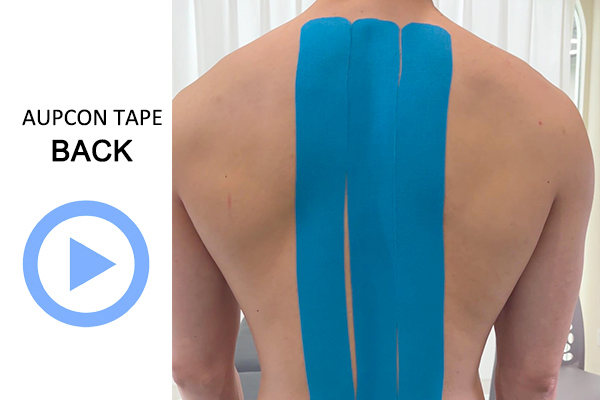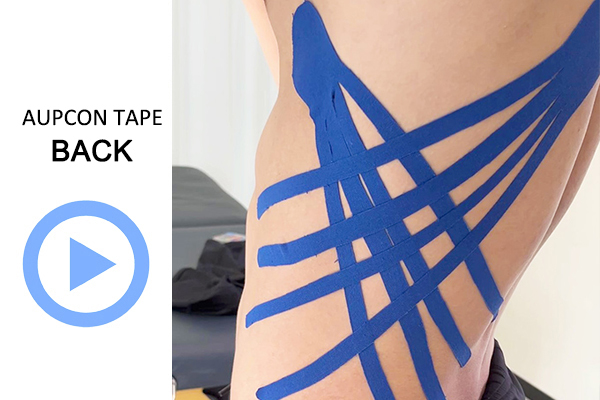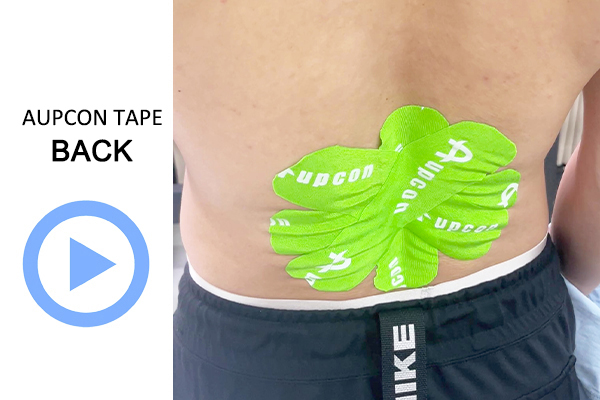How to use kinesiology tape for bruised ribs?
Bruised ribs
A rib contusion typically refers to a contusion caused by external force, such as a fall, impact, accident, or strenuous exercise, resulting in bleeding, edema, pain, and inflammation of the underlying soft tissues (including the periosteum, muscles, and capillaries), without a fracture of the rib itself.
This article explains how kinesiology tape for bruised ribs can be used to further aid in the recovery of rib contusions.
Kinesiology tape TAPING TIPS
- Before work each day, apply kinesiology tape for bruised ribs to prevent pain.
- Thoroughly remove dirt from the back skin before applying.
- Lower back physio tape with rounded corners to prevent the edges from peeling prematurely due to friction.
- Carefully rub the lower back tape several times after applying it to activate the adhesive.
- To maintain the best results of the lower back tape, it should not be worn for more than 3-7 days.
- Do not use tape over broken skin on your back, as this may cause irritation and infection.
How to use kinesiology tape for bruised ribs?
Secure the first strip of lower back tape above the side rib and stretch it 75% to fit.
Secure the second strip of lower back tape below the first strip, stretch it by 75%, and then attach it.
Secure the last strip of lower back tape vertically and stretch it 75% downwards before applying it.
What is a kinesiology tape for bruised ribs?
The function of kinesiology tape for bruised ribs
Pain relief: By gently lifting the skin at the site of pain, the tape can significantly reduce pain during deep breathing and coughing.
Promoting deep breathing: By reducing pain, lower back physio tape helps patients take deeper breaths more easily and allows the chest to expand during inhalation, ensuring the range of motion required for breathing.
Reducing swelling and pain: Lower back physio tape increases space under the skin, thereby improving blood circulation, promoting lymphatic drainage, and helping to remove fluid and blood associated with bruising.
Cotton kinesiology tape
for bruised ribs
→
Frequently Asked Questions
Yes, lower back tape, as a high-quality therapeutic tape, primarily focuses on pain relief and support for rib contusions (also known as rib sprains), while still allowing for breathing activities. Aupcon, as a professional kinesiology tape manufacturer, offers high-quality original kinesiology tapes for wholesale; contact us online to obtain them.
The difference between rib contusions and fractures is actually quite significant. Rib contusions are relatively minor injuries, without a disruption of bone continuity or integrity. The bone’s shape doesn’t change significantly; only internal oedema and haematoma occur. In other words, the bone is contused, but it doesn’t lead to a fracture. After a rib contusion, the rib still retains a certain degree of strength. A rib fracture, on the other hand, may result in displacement, and even without displacement, it disrupts bone continuity and integrity, requiring appropriate immobilisation for healing.
I. External impact
Sports injuries: Such as in football, rugby, basketball, ice hockey, wrestling, and martial arts. During a collision, tackle, or grappling manoeuvre, the elbow, knee, or helmet directly impacts the chest.
Non-contact sports: Such as skiing, cycling, or skateboarding, where the chest impacts the ground, railings, or one’s own equipment during a fall.
Falls: Slipping, falling down stairs or from a height, where the chest or side of the ribcage directly impacts the ground or a hard object.
Traffic accidents: Collisions with cars, motorcycles, or bicycles can cause contusions.
When you suffer a rib contusion from an external impact, it’s recommended to use lower back tape for relief and supportive treatment. However, if you enjoy ball sports or outdoor activities, sports injuries are likely a frequent concern. Different application methods of kinesiology tape to different parts of the body, such as the shoulders, back, elbows, wrists, knees, and ankles, can help prevent and alleviate pain. For details, please see Aupcon’s ongoing tutorial on how to use kinesiology tape.
II. Muscle Traction Injuries
Severe Coughing or Vomiting: Prolonged, severe coughing (such as severe bronchitis or whooping cough) or vomiting can cause excessive fatigue and strain of the intercostal and abdominal muscles attached to the ribs, leading to pain.
Sudden Twisting Movements: During unfamiliar movements or sudden exertion, the intense contraction of the core muscle group can strain the ribs.
Yes, no problem! Kinesiology tape for bruised ribs can reduce pressure under the skin, and because of its scientific application method, it can effectively promote blood and lymphatic drainage, helping to drain excess fluid that causes swelling or bruising, thus promoting faster recovery from injury.
Other Body Parts
Kinesiology tape for bruised ribs can effectively help relieve rib contusion pain. However, lower back physio tape can be used for a variety of back conditions (such as upper back pain, sciatica, shoulder pain, herniated discs, mid-back pain, and neck pain), so please pay attention to Aupcon tape tutorials and stay tuned for our ongoing updates on taping techniques.





